Cory Richards: A Vacheron Constantin ‘One Of Not Many’ And His Unique Piece Overseas Dual Time On Mount Everest
It’s not often that I become interested in a brand ambassador, particularly when he or she is not a household name that I can identify with. The job of a brand’s famous emissary is, after all, to inspire consumers so much that they wish to emulate their watch choices.
So when I learned I would have the opportunity to interview Cory Richards – one of the four men starring in Vacheron Constantin’s “One of Not Many” marketing campaign launched in London in 2018 – I started doing some research.
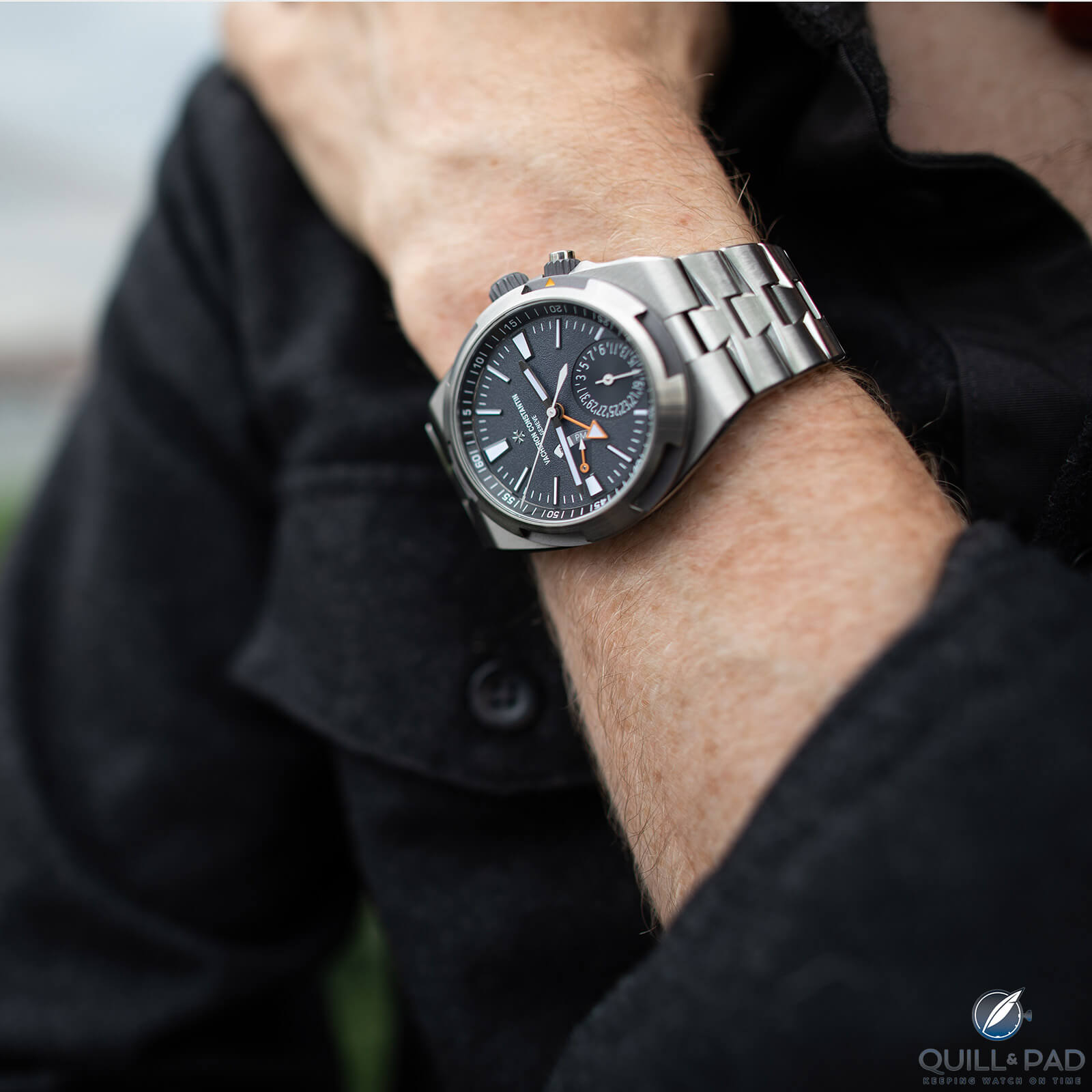
A Vacheron Constantin unique piece Overseas Dual Time made for Cory Richards (and here on his wrist)
And in the course of my research, I discovered that Richards was not what I thought he was. I had already noticed he was very different just from his digital presence (or lack thereof): he is not an adventurer for the sake of being an adventurer but rather for wanting to demonstrate how the world we live in is populated more by a human family than individuals.
Richards’ story is moving, passionate, unusual, and full of ways in which he found himself. And he tells it in such a heartfelt manner that you cannot help but come along and be part of it.
Who is Cory Richards?
The 38-year-old’s profession is officially described as long-distance explorer and professional photographer. He often works for National Geographic, taking photos and videos of some of the most amazing and unusual circumstances, people, and places. More often than not near the top of one of the earth’s highest mountains.
Richards, like many men in the world of extreme exploration, is also a professional speaker. Some of these are even motivational speakers – and, yes, their talks do provide a natural impetus toward encouragement. But Richards’ spellbinding talk was like one I’ve never experienced before.
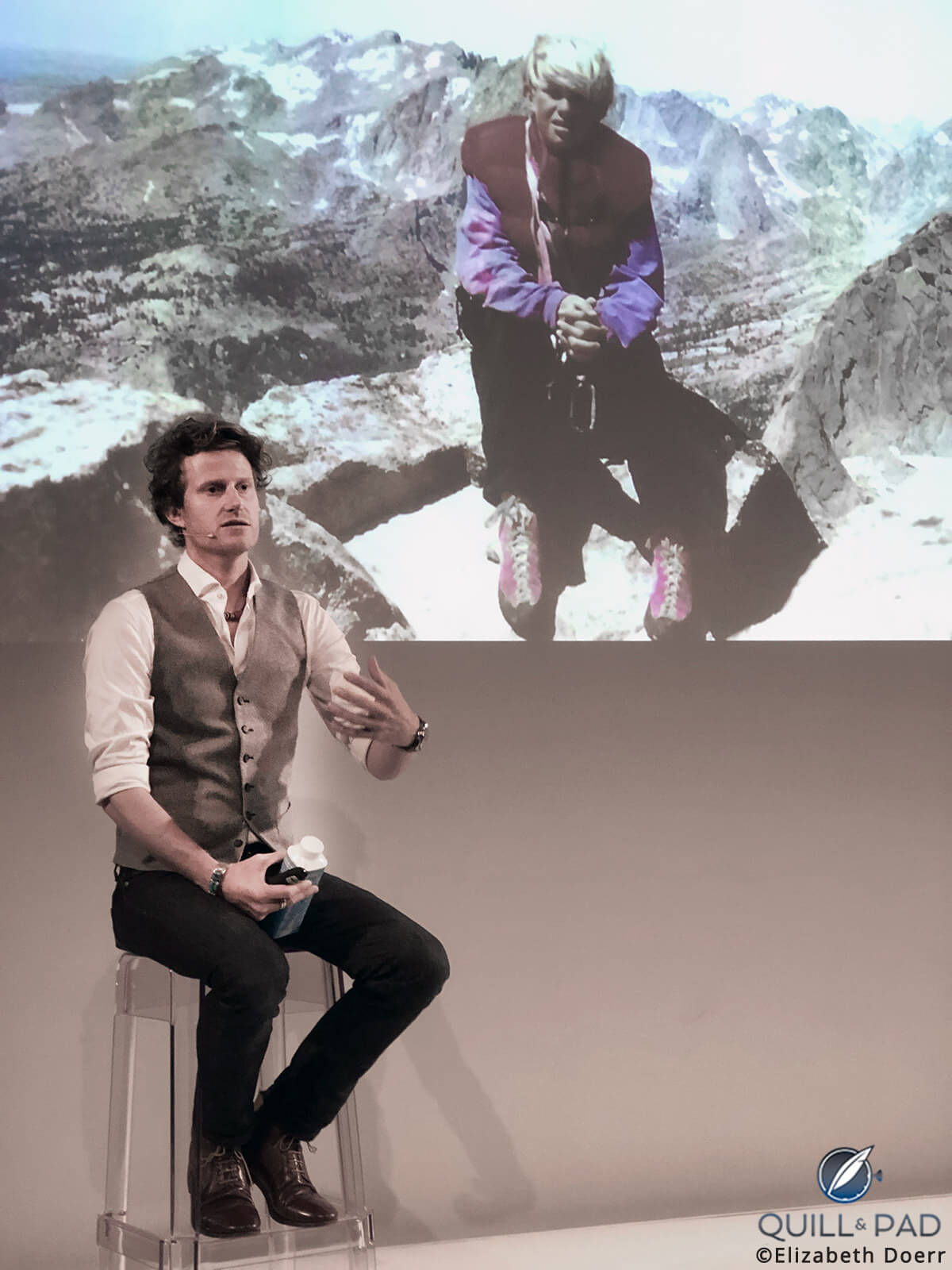
Cory Richards (in front of a childhood photo of himself) speaking in New York City
It was less geared toward being motivational and more geared toward just telling his story, which is not only entertainment at the highest level, but also the chance to experience the full range of the human condition without ever having to leave your seat. Richards’ declared goal is to invite people into intimacy and participation to discover that all human beings have more similarities with each other than differences.
And his talks very clearly do just that: intimately bring people to a place where they can participate, empathize, and above all think deeply about what they are seeing and hearing.
Richards not once paused for a breath nor did he rely on notes to bring his watch-focused group into his adventurous and very human world. There was not a single stumble, not one misspoken word. But there were lots of personal stories, fascinating anecdotes, and projected pictures to draw the audience in to Richards’ sphere.
I was mesmerized.
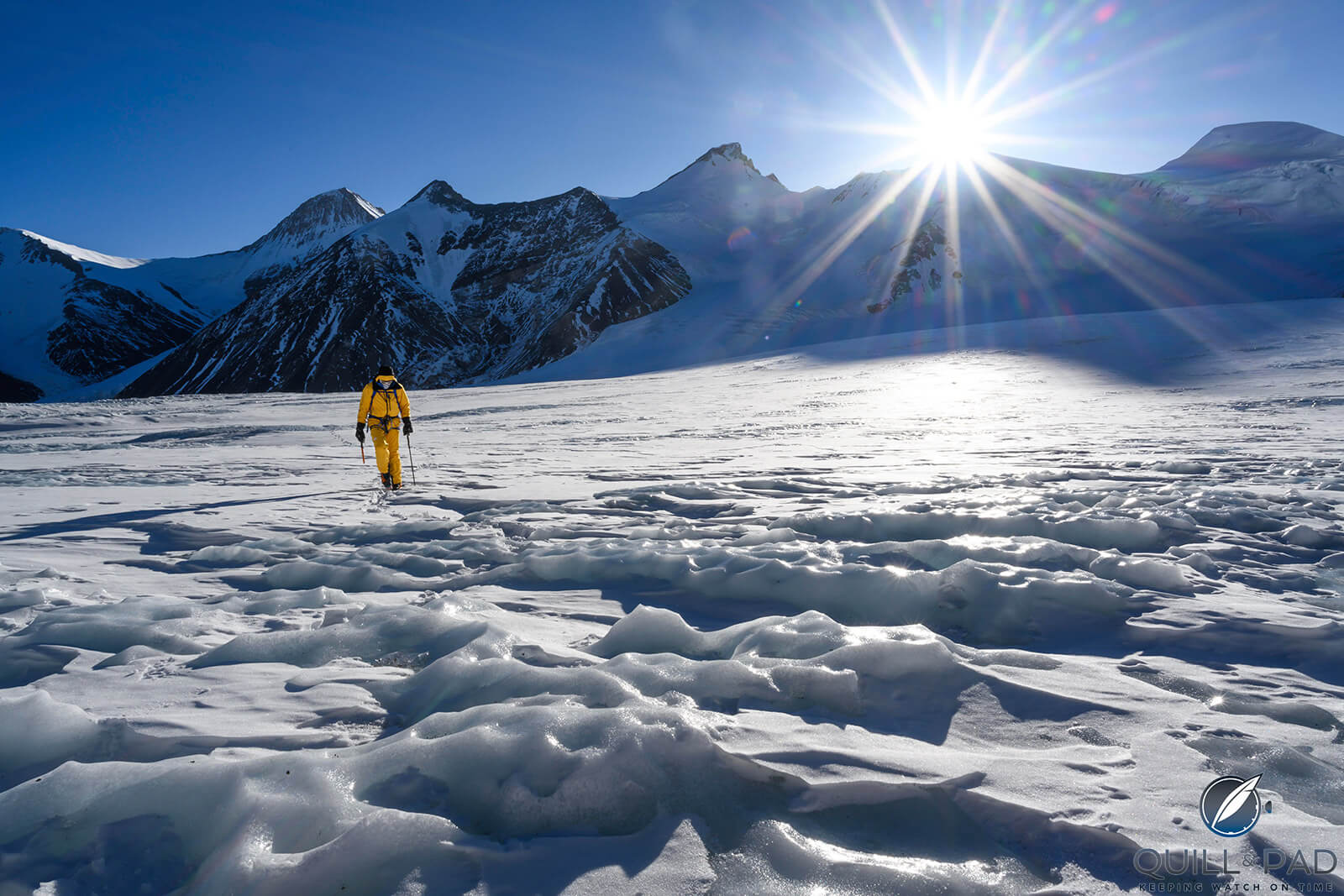
Cory Richards on Mount Everest
One of the personal elements making Richards so likable and relatable is his acknowledgement of mental health and addiction issues and how these have affected his life, pushing him toward his cutting-edge work and allowing him to experience gratitude, not only for surviving perilous situations but also in finding peace in everyday life.
Once such momentous juncture occurred in 2012 when Richards and two climbing partners found themselves on the brink of death in an avalanche (see the entire, nail-biting story in National Geographic).
Richards experienced high emotion and chose to document himself on camera, allowing viewers a rare glimpse inside the life-threatening environment of mountaineering during an extreme situation that could well have resulted in death. It also resulted in one of Richards’ most iconic photographs, one that landed on the cover of National Geographic: a self-portrait of a man clinging to life under ice.
Though Richards does not lead anything even approximating an everyday life as the average human in a first-world country experiences it, he is nothing if not genuine. A true pleasure to learn from and support.
Richards does not have a Wikipedia entry, but he does have an amazing Instagram account well worth following and a website displaying much of his work.
Vacheron Constantin Overseas Dual Time Prototype worn by Cory Richards on Mount Everest
Mountaineers and adventurers need sponsors to help finance their adventures. That is a fact of life.
And so Richards came into contact with Vacheron Constantin.
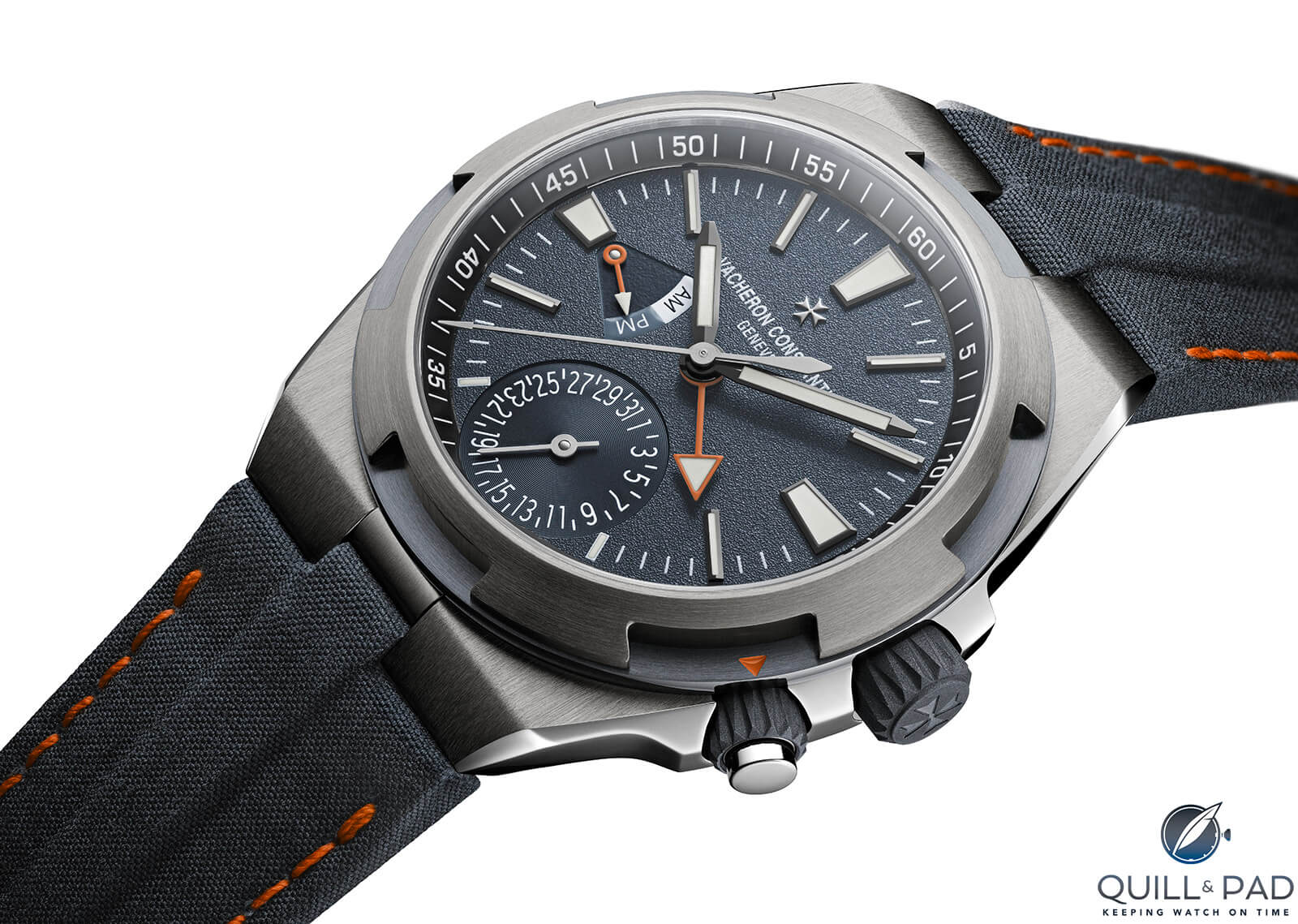
The Vacheron Constantin unique piece Overseas Dual Time made for Cory Richards
I have seen way more than my fair share of ambassadors and “friends of the brand” in my many, many years working as a journalist in the watch industry. And there is always a certain degree of commitment that you can just feel coming from the celebrity personality in question. Some are really into it, some are a bit more noncommittal, and some are entirely blasé.
I can honestly say I don’t think I’ve ever seen anyone so happy to be part of something like this as Richards, who hugged his interview partners after speaking with them. Who remembered people’s names. Who took answering every question – big or small, dumb or clever, and often repeated ad nauseum – with the same amount of gravity.
And through all of that, Richards exhibited reverence and a great deal of respect toward the magnificent historical brand that is Vacheron Constantin.
In other words, he takes this partnership extremely seriously.
Richards embarked upon a Mount Everest climb in 2019 – his third ascent after two previous climbs in 2012 and 2016, the latter without oxygen. Together with his friend Esteban “Topo” Mena, a mountaineer from Ecuador, Richards attempted to establish a new route to the summit, something not done since 2009.
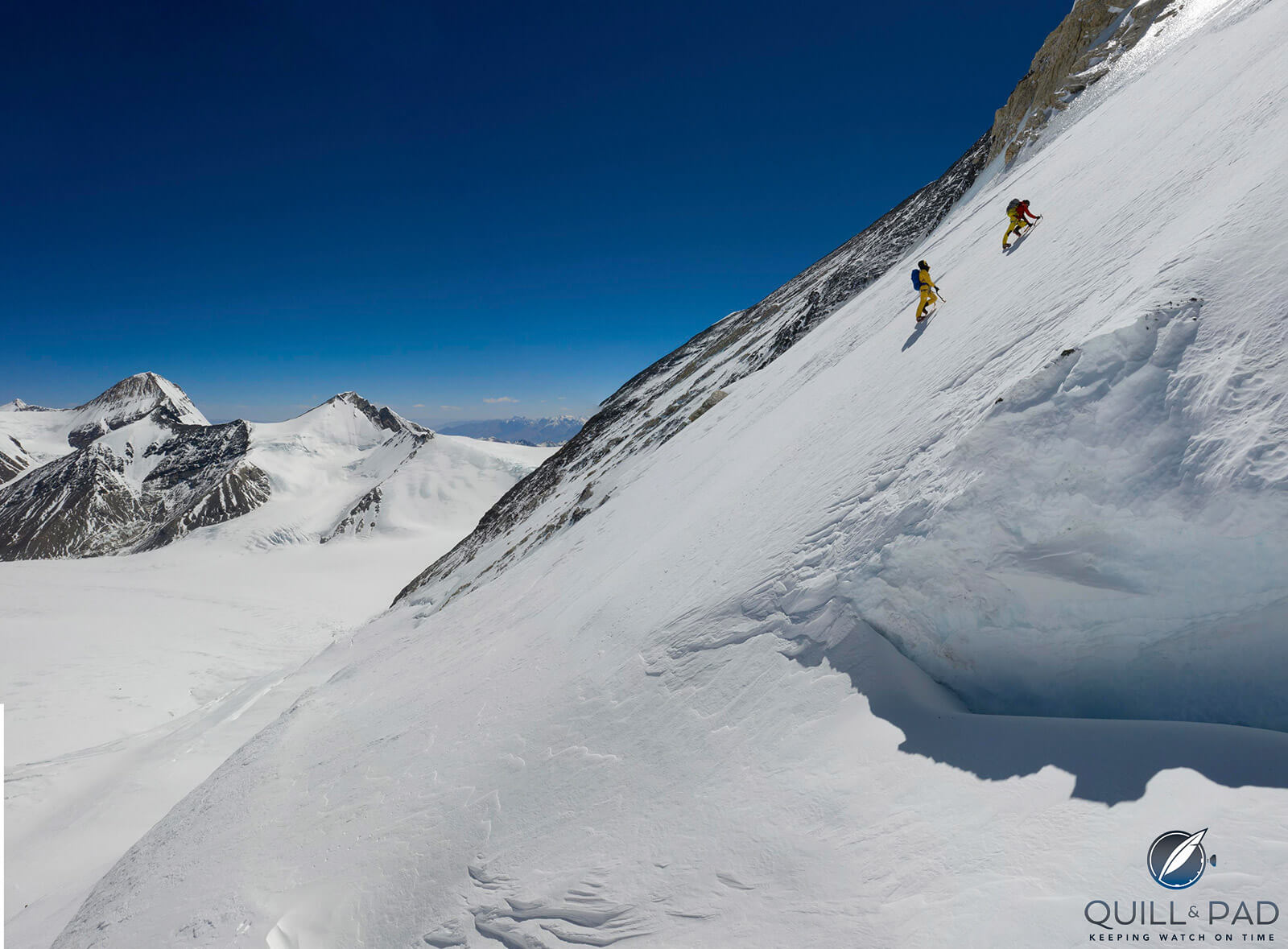
Cory Richards and Esteban ‘Topo’ Mena on their 2019 Mount Everest summit bid
Richards and Mena ascended from Tibet without Sherpas or other guide help and without oxygen to pioneer an estimated 2,000 meters (two kilometers!) of “new” climbing route on the mountain’s northeast face. The pair was self-funded, and Richards spent a year training for the climb.
Unfortunately, due to weather conditions they were unable to complete the summit bid.
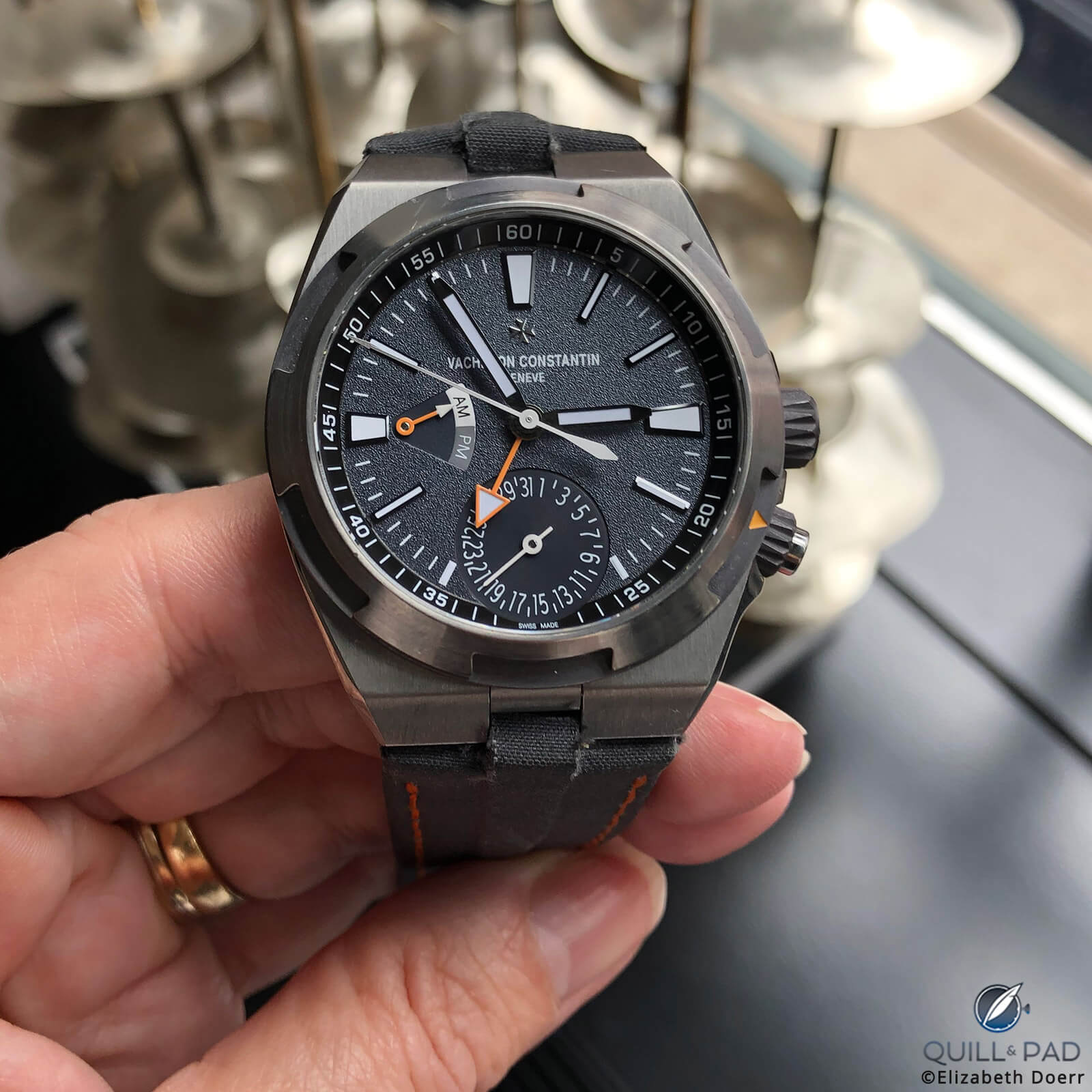
Vacheron Constantin unique piece Overseas Dual Time made for Cory Richards
Richards wore his brand-new, unique-piece Vacheron Constantin Overseas Dual Time prototype for the entirety of the climb (and beyond).
This is very likely to be Vacheron Constantin’s first and only watch on the wrist of an explorer on Mount Everest.
When it came to creating a watch for Richards, the adventurer and the manufacture quickly settled on a dual-time timepiece so that Richards would always know what time it was at home no matter where his adventures took him.
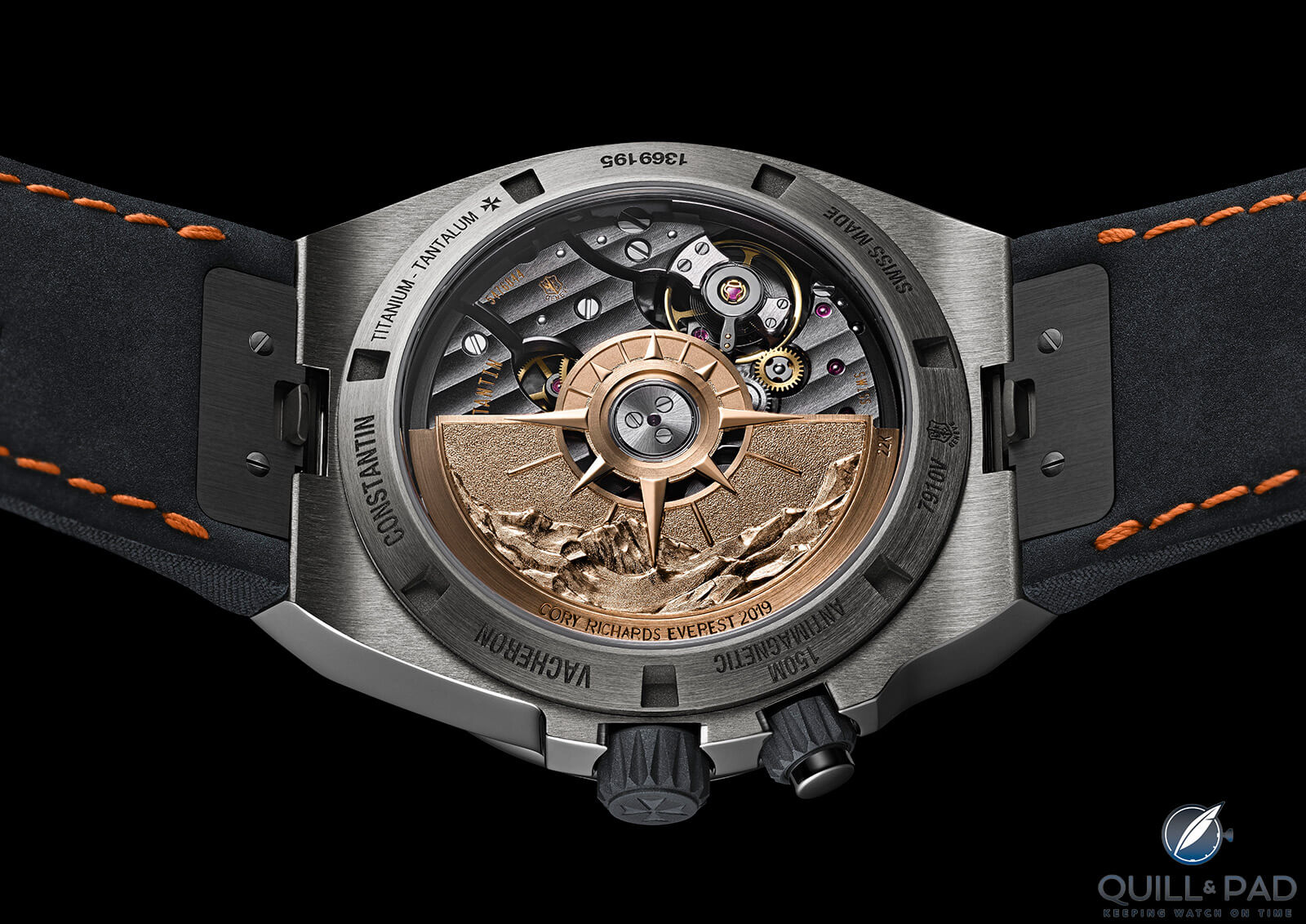
Caliber 5110 of the Vacheron Constantin unique piece Overseas Dual Time made for Cory Richards: note the awesomely engraved rotor
The prototype created with him in mind features a gorgeous rotor engraved with a view of Everest from Tibet taken from one of his own photos. “It’s from a pass that we drive over on the way to base camp, and it’s the first view of the mountain,” Richards confirmed to me.
“On the Tibetan side you drive for several hundred miles across the plateau, and there’s this moment where you come up over the pass and literally five or six of the 8,000-meter peaks on the planet open up in front of you, and Everest is just right there. And it’s a magical place, it’s a magical moment, and it’s also a heavy place and a heavy moment because you understand what you’re going into,” he explained.
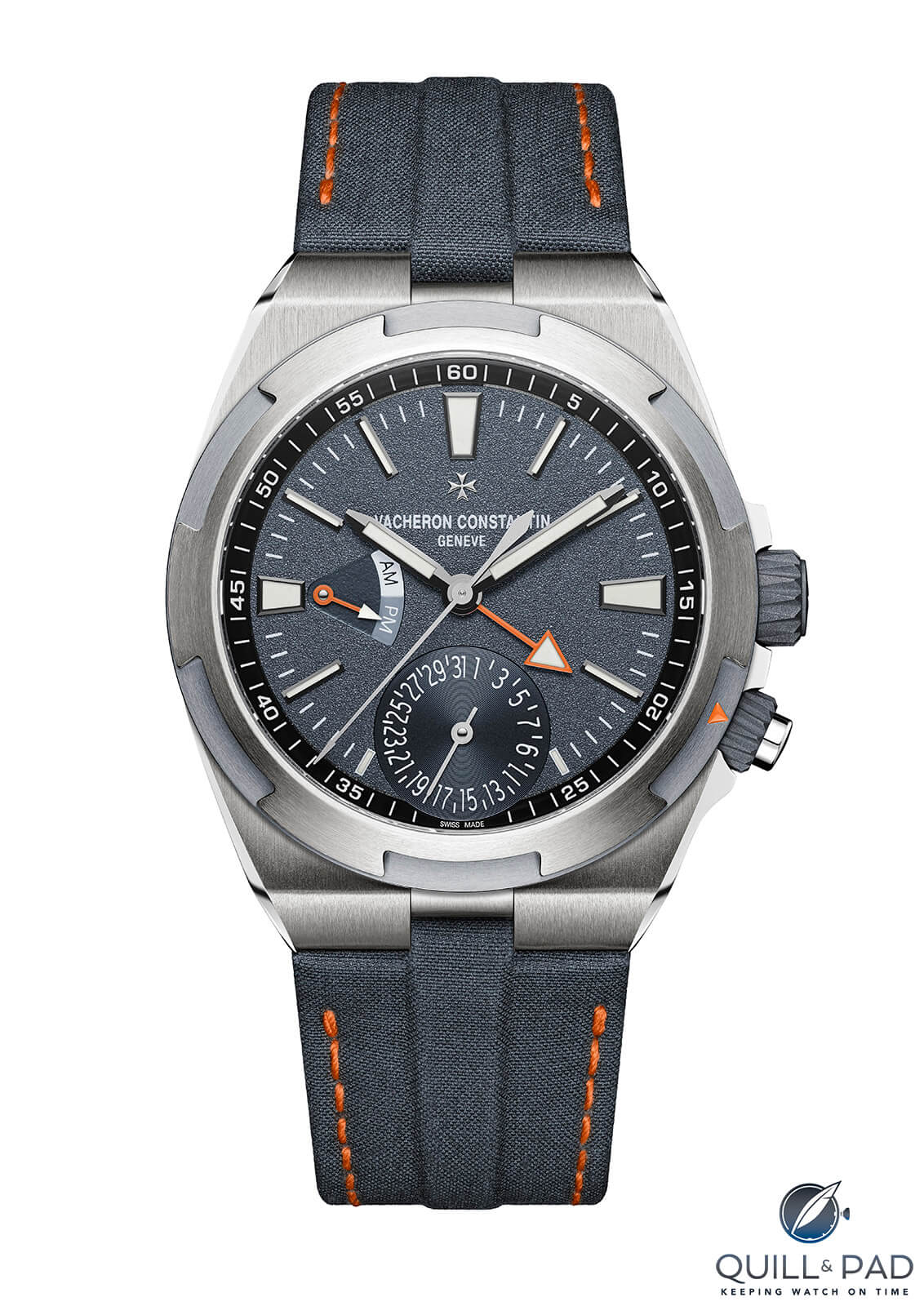
Vacheron Constantin unique piece Overseas Dual Time made for Cory Richards
The watch’s titanium case is light and scratch-resistant; it is also reinforced with tantalum beneath the bezel and on the crown protection.
Richards’ watch is secured by a gray-blue Ventile technical fabric strap with orange stitching chosen for its particular water resistance.
The watch’s gray, blue, and orange color scheme is very sporty, underscored even more by the NAC coating on the movement components, which also allows the 22-karat gold rotor to stand out more. A soft iron casing protects the movement from magnetism.
Photographs and video taken during Richards’ 2019 Mount Everest summit bid will be on exhibit in Vacheron Constantin boutiques worldwide.
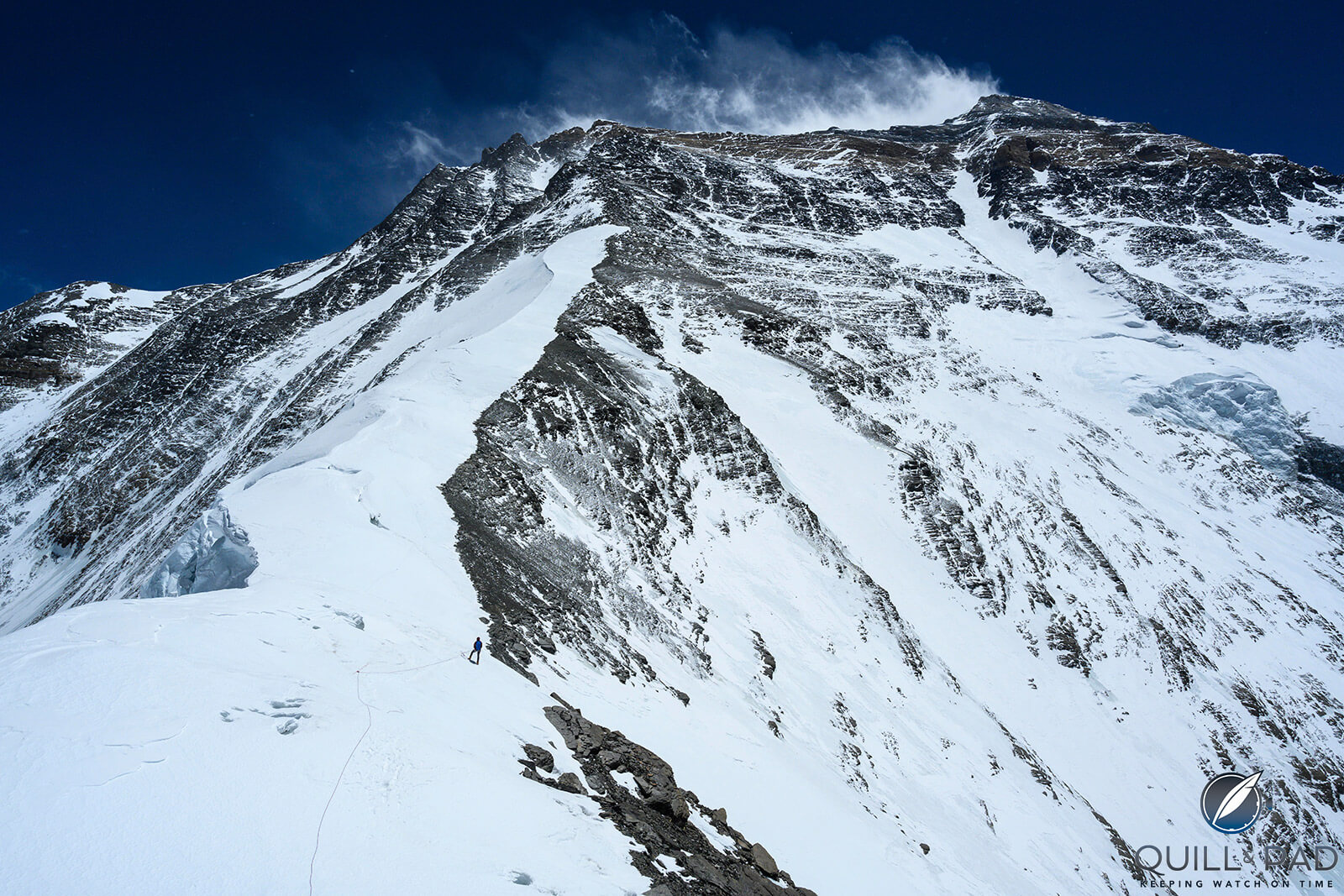
Cory Richards on Mount Everest
Questions and answers: Cory Richards
Talking with Richards was so delightful and uplifting that I prefer to present part of the interview in the form of a Q and A here. He talks a lot about his attitude toward watches and time, which was entirely refreshing.
And don’t forget to watch The Watches TV interview at the end!
Quill & Pad: Do you like watches?
Cory Richards: I have on my wall a watch that I wore for years, and it filled with saltwater. I literally framed it because it’s such a beautiful thing. And I have this sense about watches that leads into a greater philosophical meandering about time.
I love watches because I think they symbolize something that is a) an invention of us, like the concept of time but b) exists outside of us. When you have a beautiful timepiece, it grows with you and you grow with it. The way I’ve always described this is it stops reminding you of things that you need to do and it starts reminding you of things you’ve done.
There’s no way I can ever look at that watch and not understand that this is a massive piece of my life. Massive amounts of time were spent investing in this project and that’s how I view them. Especially as men, we don’t get to accessorize in the same way, so watches and timepieces to me are one of those ways that we can express ourselves, which is really cool.
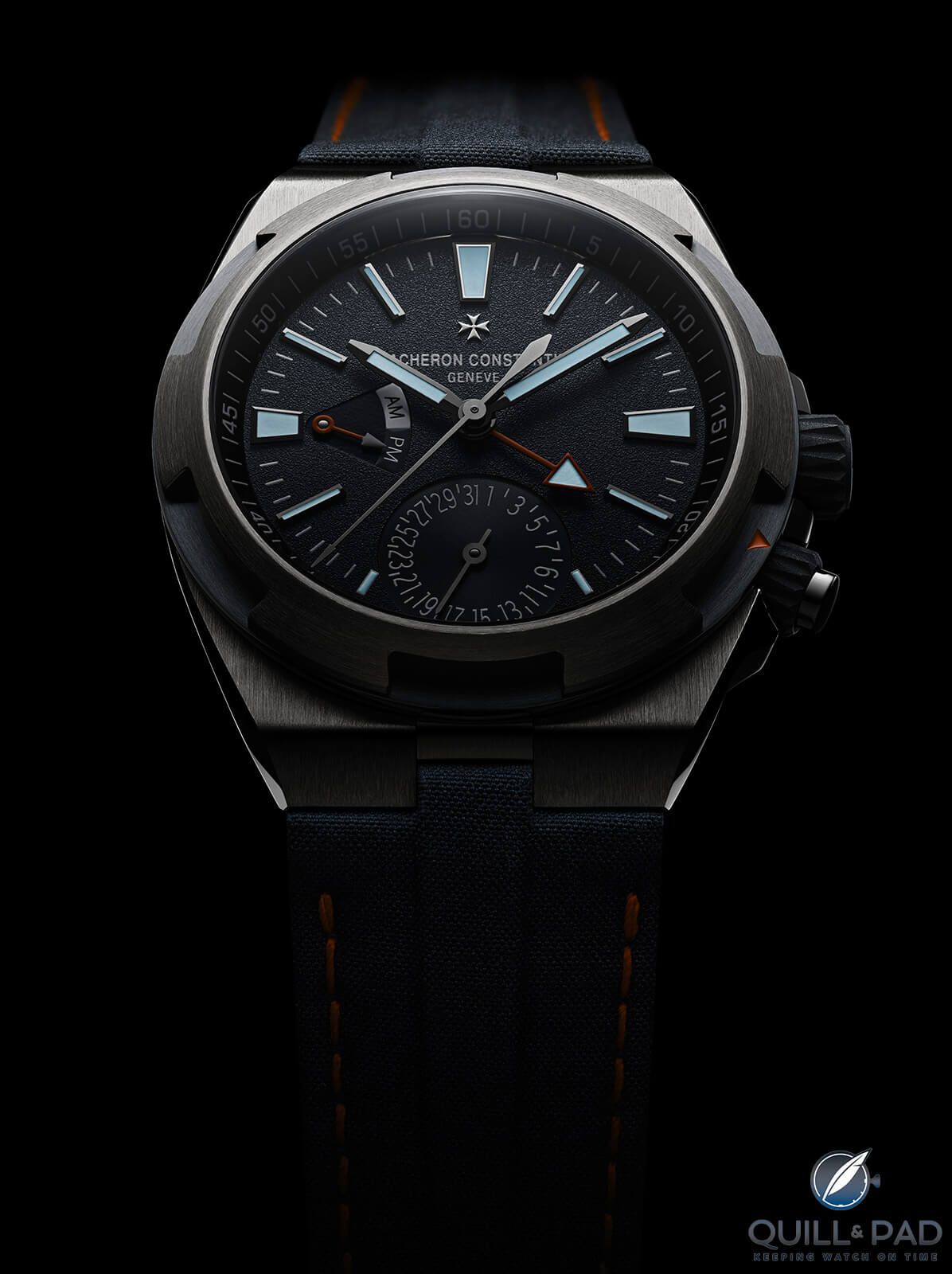
Vacheron Constantin unique piece Overseas Dual Time made for Cory Richards in low light
Q&P: So you took the Vacheron Constantin up to Everest with you and it had no problems? It kept on ticking?
CR: I mean, I tried to destroy it but it didn’t work. [laughs] No, it never had any hiccups, any glitches, or anything.
Q&P [watching him glibly change out the strap]: I see you’ve also mastered the quick-change system. Not everybody can do that so well and so quickly!
CR: Yeah, I love that system; we actually made several bracelets for it so when I’m in the city I put on this one or the alligator. And then when I’m on the mountain I actually have a specific strap that was made out of a specific material that goes all the way back to World War II [Ventile technical fabric] that they made for the climb. It’s very tough and it’s lighter than this bracelet.
Q&P: Were you already aware of the Vacheron Constantin brand before you began your partnership?
CR: Well, it was in my sphere. But if I’m going to be honest, [buying a Vacheron Constantin] was one of those things that I was probably saving for for a little while. When you talk about luxury, there’s all these other amazing brands, but then there’s like the brand, right? And Vacheron Constantin has always occupied that space, so it’s always been the brand that I’ve aspired to. This was a very fortuitous thing.
Q&P: It’s doubly amazing because Vacheron Constantin doesn’t normally do things like extreme sport partnerships.
CR: For them and for the “one of not many” campaigns, it wasn’t necessarily about endorsement, it was about what the chosen people exemplify – which is being exactly that: one of not many. It’s about standing out and standing far apart. That’s why I think it works for us as a partnership.
Q&P: Vacheron Constantin is one of the most respected and revered brands and names in watchmaking; a Vacheron Constantin is forever. It’s a watch that will be not only with you, but whatever comes after you most likely; you can hand it down through generations. I can’t even imagine how it feels to be immortalized in metal on one of them!
CR: Well, it’s funny, I’ve never thought of it that way, I just thought of it as this incredible privilege to be part of a brand that had that amount of legacy. So to be part of the legacy itself in some small way is one of the more humbling things – getting added to that sort of legacy after 200 years, the entire breadth of the history of the brand, that’s just a very humbling moment. You imagine every single person who has been involved with this brand, who came before us to this moment in time, and I love thinking about it in a time continuum too! Every single thing that happened to make this brand what it is now, that’s kind of that’s insane. To be added onto that, you’re just like “all right!” An incredibly humbling and honoring experience.
Q&P: How does time and timekeeping play a role in your work?
CR: Well, there are the obvious ways: keeping time. The more time we spend invested in our passions, the more successful we’re going to be at them. So there’s that linear sort of direct line.
But then the other thing is I feel as though all of us, myself included as an artist and a climber, I want to evolve. And evolution is really underscored by the concept of time. So in terms of this trip [the Mount Everest summit bid of 2019], I think of it in terms of we did our best, but we came up short. And so that’s part of the evolution, that’s part of the time passing process, that’s part of my evolution as climber; it’s about further reducing, it’s about pulling absolutely everything out of the experience, boiling it, and reducing it down to something that is tangible and teachable. That’s something I can teach myself when moving forward. So that’s how I really look at it.
Things aren’t instantaneous, they never are, and the best things, the things most worth fighting for and investing in and winning, for lack of a better word, take time. The best things aren’t instant. They never are. And so that’s kind of how I wrap time into my process.
Q&P: But you don’t need the watch specifically to time something while you’re climbing or on some adventure?
CR: Yes, actually. We’re always paying attention to time on the mountain: we have to summit before a certain time, we have to get up at certain times. But the best thing about this that they built in by my request was the dual time, which tells me what time it is at home.
Because then I can think about who’s back home waiting for me: my family. I think that always reminds me of the things that are stake, especially when I’m climbing, looking down and seeing the other time, the time that everybody I know is hoping and wishing that nothing bad happens, it’s more than just saying, “oh I can call because they’re up.” It’s reminding me who else exists in the world.
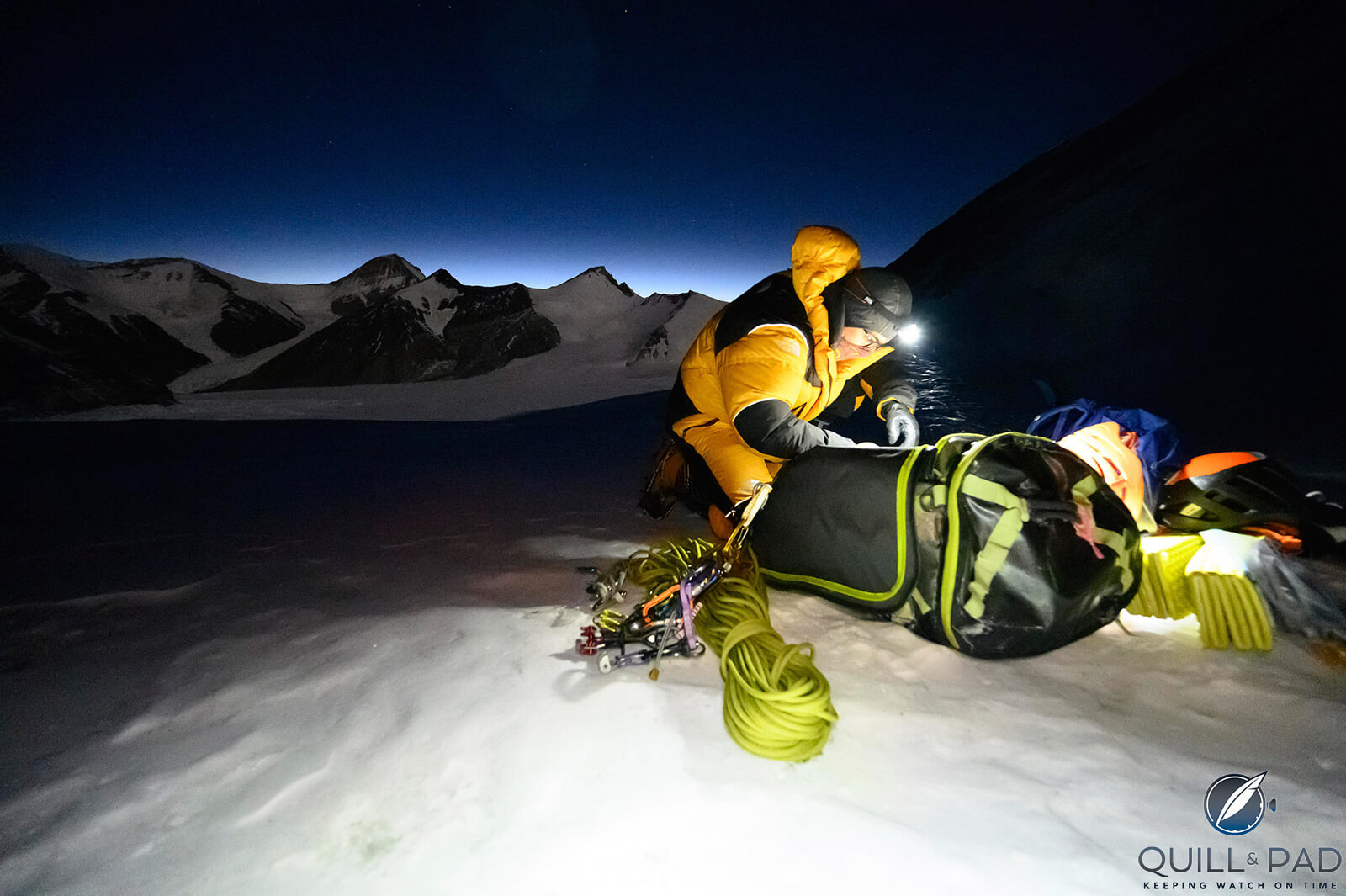
Cory Richards during his 2019 Mount Everest summit bid
Q&P: There was a lot of reporting this year on the conditions on Mount Everest. I’m curious to ask someone who was actually up there this year: were the reports overblown?
CR: Well, what’s really important to remember is where Topo and I were . . . because we were on a new route, there was nobody. So it’s basically like being on the moon. There’s no garbage anywhere because no human’s ever been there. There are no bodies, you know, we are literally on another planet. But are the reports overblown? Yes and no. I mean, there are problems on the normal routes, but those problems have been there for ages.
And what I think is more impressive is that every year that it gets reported on, it’s actually less and less and less because the problems are getting solved. The problems that do exist seem to be going away, again, with the passage of time because the people are understanding this is how we manage this more effectively.
This year was a total anomaly in terms of the weather and why everything transpired the way it did: because it was one weather window, one day really for people to summit, it really forced everybody up at the same time.
Q&P: When you come from the other side, to get right up to the summit do you have to go around and join the line to get up there? Or was there a different way to get all the way up to the top?
CR: We would have joined it about 1,000 vertical feet [approx. 300 meters] below the summit, but we could have climbed independently to that point. And in fact there is a way to the summit that we’re really hoping to do when we go back, but it doesn’t touch the line.
Q&P: But the weather conditions would have to be really perfect for that?
CR: They’d have to be so perfect.
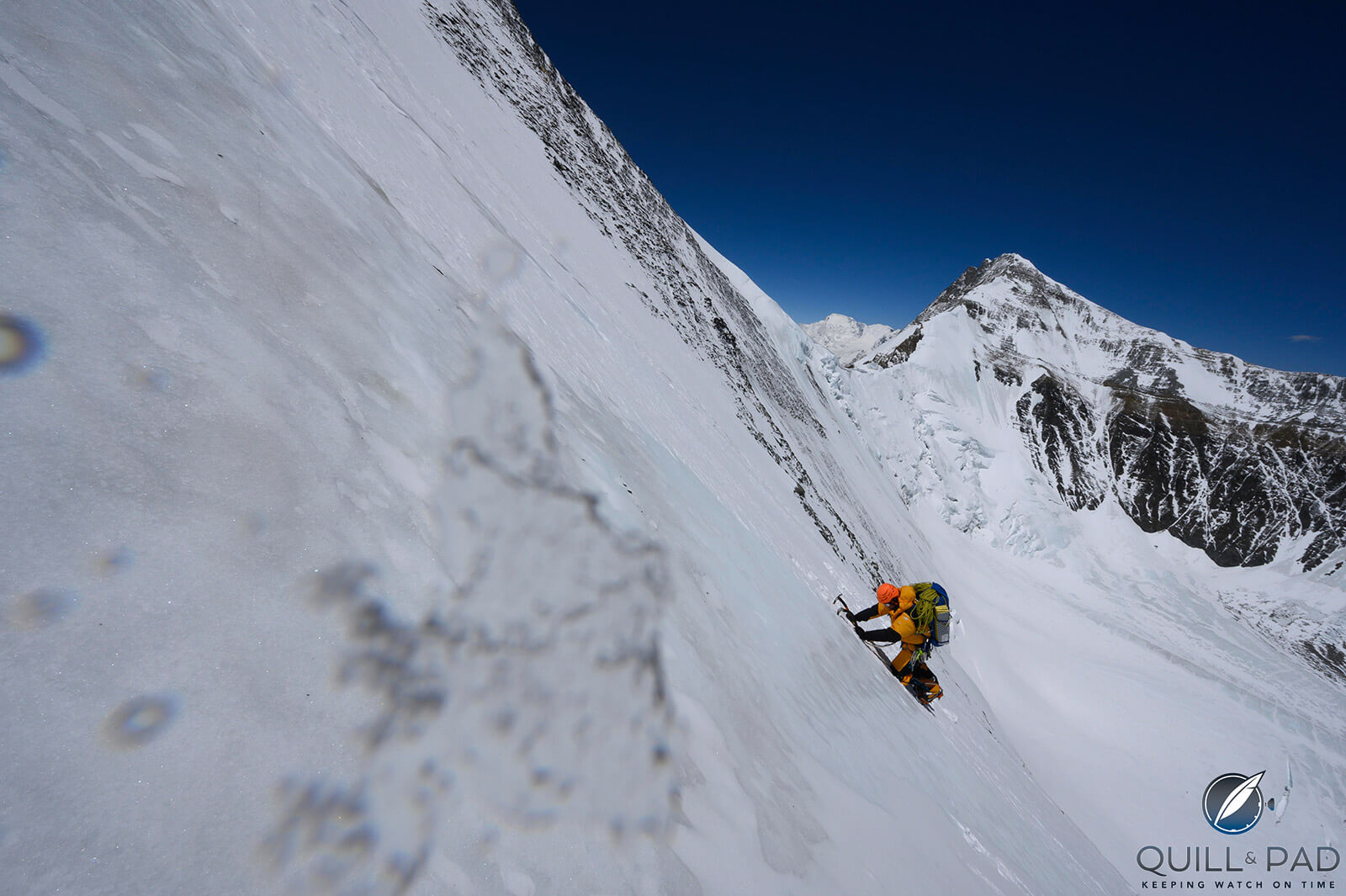
Cory Richards during his 2019 Mount Everest summit bid
Q&P: And why are you doing it? Is it just the sheer willpower to say, “we’re doing something different by discovering this?”
CR: No, in fact I think it has very little to do with that. I view it more as an art form.
When you’re a stage actor, to perform on Broadway would I imagine to be the pinnacle, right? And Everest is in every way that. And for me, the act of climbing and doing a new route is akin to that pinnacle. But it has nothing to do with the hubris involved with staking our claim; it’s just that’s where I want to be. In some ways it’s the highest cathedral in the world, it’s the place that brings all else together, it’s the place from which all else on the planet flows and expands down from. And to me it’s an act of almost performance art or dance.
It’s something that is refinement and reductionism and articulation and perfection, but you’re drawing your physical being into that, into a way that you demand perfection out of yourself, and you demand that you find a way to be as in tune and lined up with the mountain and the natural environment as you possibly can.
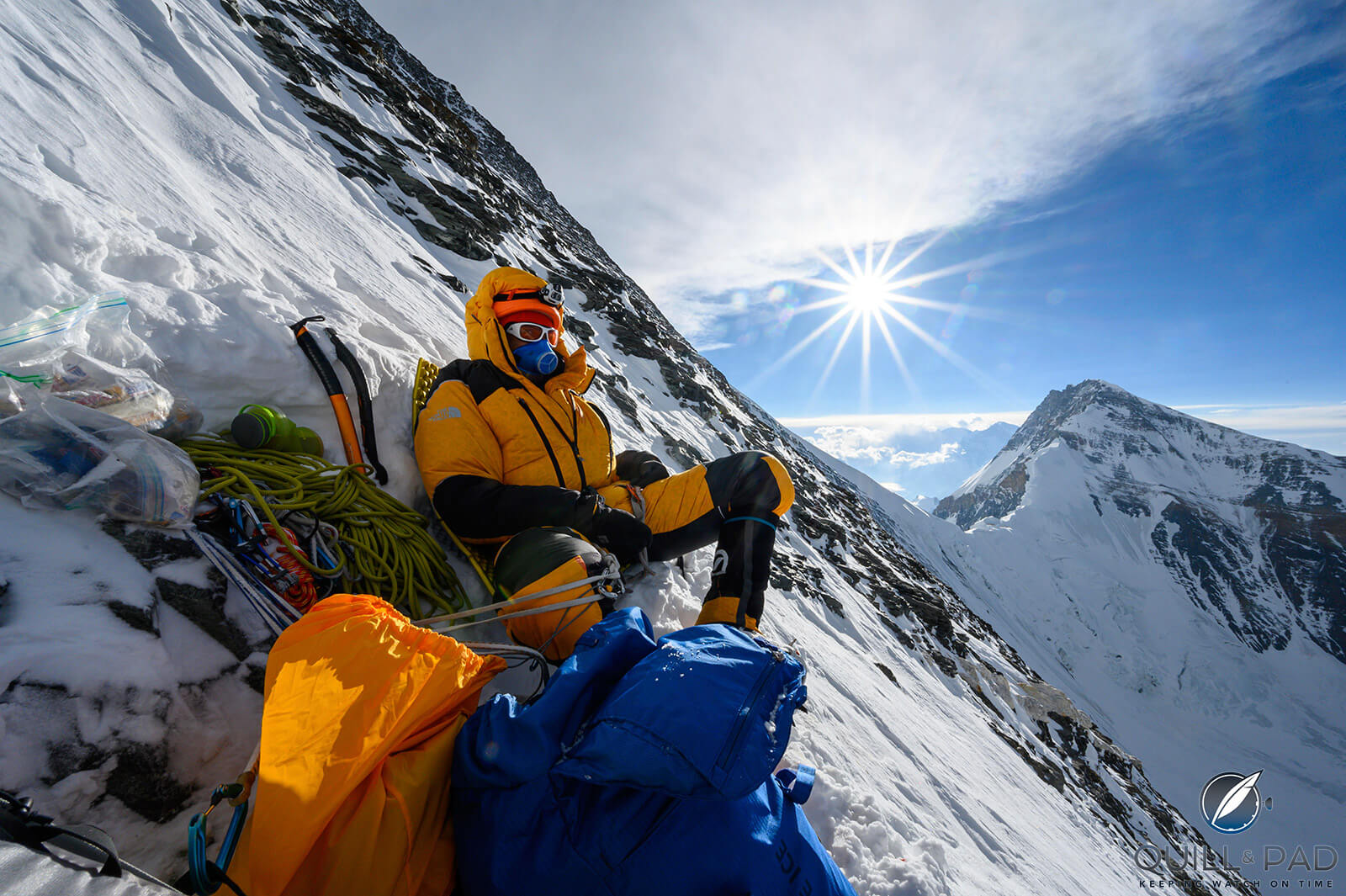
Cory Richards during his 2019 Mount Everest summit bid
Q&P: I’m curious which role is more important to you: being the photographer or the adventurer? Is there one that you weigh more than the other?
CR: I think whichever role is served best to tell a story globally. So whichever role I’m put in at that moment, if I’m going to be more effective at telling a story and bringing people into the experience as the storyteller behind the camera or as the person.
I’ve never thought of them as really mutually exclusive; they’ve always been deeply tied at their root because I grew up climbing and skiing. Photography became a part of that, there was never really a time when they were at all different from one another. They always operated in exactly the same moment and had equal emphasis.
Q&P: It was just the two of you on this expedition: how do you handle that in terms of your art? Do you take photos of your partner? Or are you setting up things where you’re both in the photos? Or is it just landscape?
CR: It’s all of it: he’s shooting me, I’m shooting him. The other thing about this trip, though, that was a little different: we didn’t focus as much on media. [Richards Snapchatted his way up the mountain in 2016.]
We focused on the climb because we knew that a) it demanded everything that we had; b) anything in the media was going to drain those reserves; and c) anything that we could do to stack the cards in our favor would ultimately pay off in spades.
Q&P: So what you do, is it really about the mountain? I don’t feel your work is really necessarily about the mountain, it’s about you. So is this partnership about a watch?
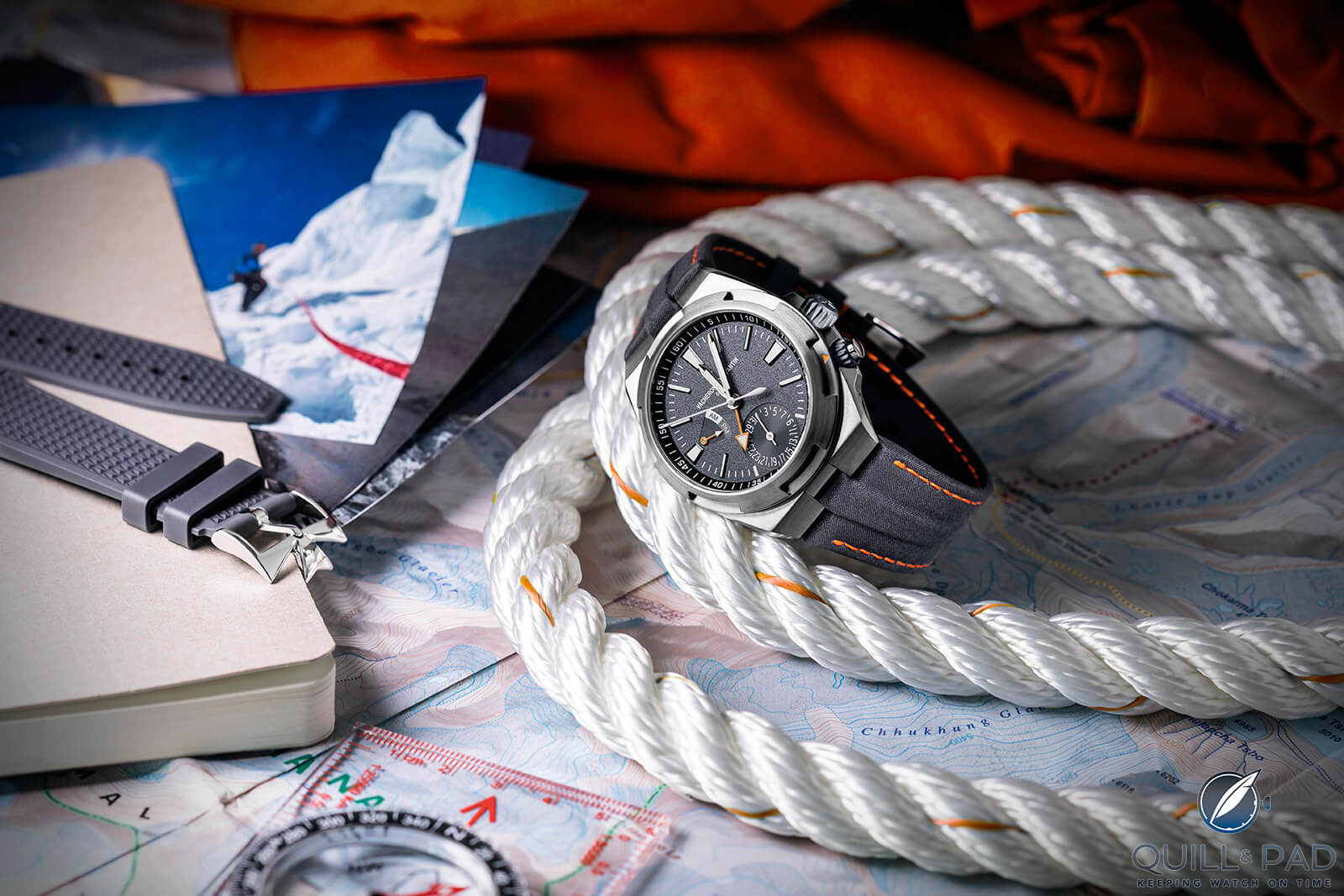
Vacheron Constantin unique piece Overseas Dual Time made for Cory Richards
CR: I think this partnership is about a commitment to craftsmanship, and that’s how I view climbing. It’s about a commitment to legacy, which is also how I view my photography. And it’s about a commitment to each other.
There’s an investment that takes place whenever I partner with somebody, and that’s why I don’t partner with a lot of people. But it’s meant to be an evolution with one another for the life of that.
However, it’s about watches and it’s about the Overseas collection. But it’s more about a relationship and an evolution and a growing with one another into a new space that we both occupy.
Quick Facts Overseas Dual Time prototype for Cory Richards
Case: 41 x 12.8 mm, titanium with tantalum inserts and soft iron inner core
Movement: automatic Caliber 5110 with 60-hour power reserve, 4 Hz/28,800 vph frequency, Geneva Seal
Functions: hours, minutes, seconds; date (synchronized to local time), second time zone, day/night indication synchronized to home time
Limitation: one unique piece
You may also enjoy:
A History Of Vacheron Constantin’s Overseas Line, Culminating In 2016’s Worldtimer
Vacheron Constantin Métiers d’Art Les Aérostiers: A Lofty Tribute To The World’s First Aviators
Vacheron Constantin FiftySix Blue: The Delight Of A Well-Designed Dial
Leave a Reply
Want to join the discussion?Feel free to contribute!



I really, really, really hope VC is going to make a version of this product available to the rest of us! Please manufacture this!!!!!
I know, right? Gorgeous watch!
I, certainly, would buy one.
I hope VC introduces such dial treatments to their Overseas Range. Hope they also make this one…
You are not alone in those wishes, Kunal!